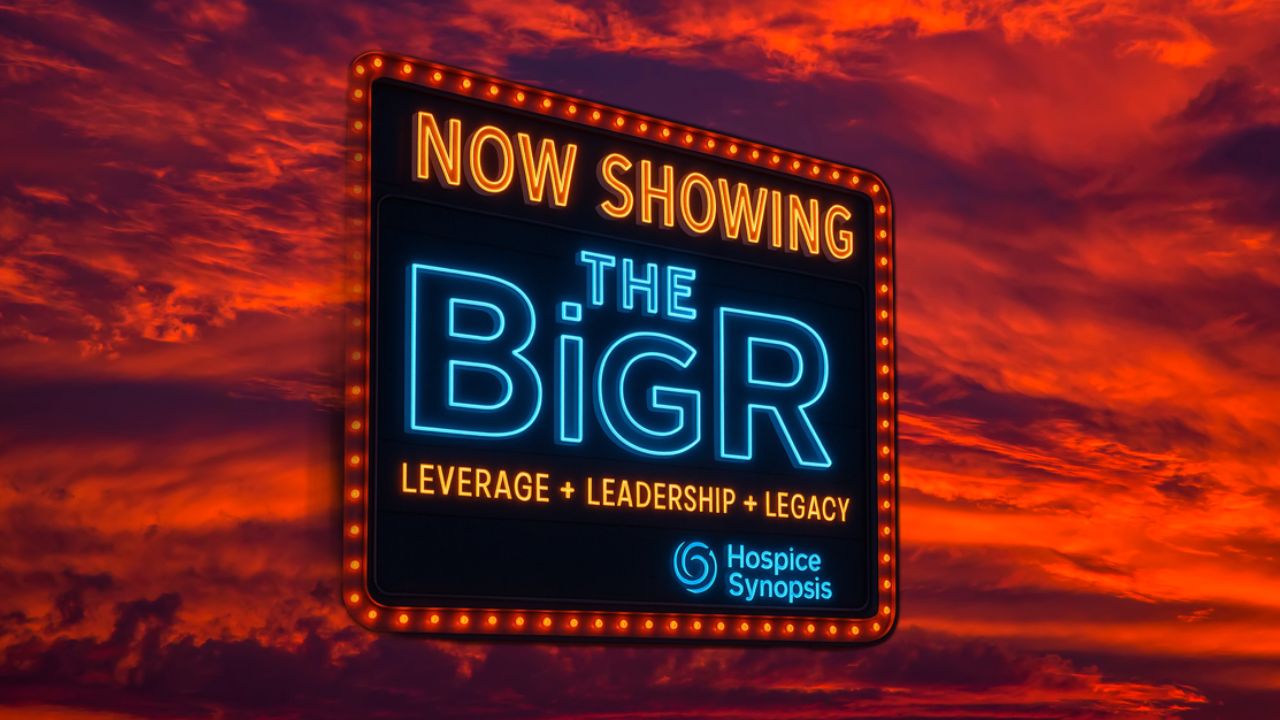“What’s the one thing that would bring the most peace today?” — Brian H. Black, D.O.

I. A Friendship that Changed my Life
We were wrestlers who talked statistics, and everything else—from fighter jets to philosophy. Both driven with challenge and a search for meaning.
Dennis was the kind of mentor who didn’t just help you solve problems—he helped you believe they were worth solving. Over the course of two decades, he became a touchstone in my life. A steady voice.
I still smile thinking of him gleefully commandeering my computer to tweak an Excel formula. His quiet joy made every problem feel solvable. What I wouldn’t give to hear him say “Hey Brian” one more time.
When he got sick, I walked with him through the long arc of decline. Through his final weeks. His voice became a whisper. But he never stopped teaching.
I grew as a person by being his friend. Not as a clinician charting decline, but as someone sitting by his side, trying to offer support a man who had always lifted up others. Now, we wrestled mainly with the weight of shrinking time.
In that space—between data and dying, numbers and meaning—I learned something I now carry into every hospice room I enter.
II. From Math to Meaning
We were out jogging when Dennis turned to me and said, “You don’t need to solve everything—just find the variable that matters most.”
We’d been talking about leverage and statistics—specifically R-squared, the formula that shows how much one variable explains an outcome. But you don’t need to be a data analyst to understand the lesson. It’s about tuning out the noise until the signal comes through clear.
I did not know it then, but that one conversation would reshape how I think about caring for the dying.
I’ve come to think of it as finding the BigR—the one thing that brings the most peace today. Not the most dramatic change. Not the most advanced intervention. The thing that truly matters.
In hospice, those factors are rarely additional treatments. They’re personal: a long-awaited goodbye, a pain-free moment. For one patient, it was simply hearing his granddaughter’s laugh on the porch.
This isn’t just philosophy. It’s strategy that sharpens our focus. When time is short, precision matters. Not everything can be fixed. But the sacred can still be honored.
Every moment at the bedside is a chance to refocus, to ask: What’s the BigR today?
III. A Compass for the Final Chapter
What is the one thing that would bring the most peace today?
We ask it quietly. Sometimes aloud. Sometimes silently, as we enter the room.
In hospice, that question is more than a courtesy—it’s a compass. When time is short, it’s how we avoid wasted motion. It centers the care plan, realigns overwhelmed families, and reminds us why we’re here.
I used to think hospice work required encyclopedic knowledge. Now I know it demands something harder: precision with presence.
The BigR isn’t just a metaphor—it’s a mindset. It sharpens our focus on what matters most. And its power comes from three forces that shape the way we show up:
BigR = Legacy + Leverage + Leadership
- Legacy is what we leave behind.
- Leverage is using the smallest effort for the biggest peace.
- Leadership is the clarity to act on it.
We don’t need to fix everything. But we do need to find the one thing that matters most—for this moment, this visit, this person.
That’s the power of the BigR. It doesn’t point to everything. It points true north.
IV. Real-Time Leverage
Hospice is the practice of presence.
BigR doesn’t live in formulas. It lives in moments. It surfaces in a pause, a quiet question, or a gentle truth finally spoken.
- For patients, it’s often the moment they choose to stop a burdensome treatment and reclaim comfort.
- For families, it’s a conversation—raw, real, and without regret.
- For clinicians, it’s standing steady while others sway. It’s calmly naming what no one else wants to say.
When time is short, clarity matters more than complexity. Sometimes the most important thing we offer is witness with our care. We need to earn the trust to hold space.
These aren’t just tasks—they’re acts of leadership, rooted in intention. That’s how we honor the sacred work of hospice. We find the BigR in little moments. This is a foundational guide to a lasting legacy.
Dennis lived this mindset long before I had a name for it. He didn’t just teach me how to solve problems; he showed me how to search for what mattered most. And that is real leverage we carry into each day in hospice.
Three Key Insights
• BigR helps identify the most meaningful, high-impact action in moments of limited time.
• In hospice, a few grounded decisions shape how patients experience dying—and how families remember it.
• BigR combines legacy, leverage, and leadership into a mindset that guides presence, not just practice.
Two Actionable Ideas
• Start IDG meetings by asking: What’s the BigR for this patient today? Make it part of your team’s shared language.
• In difficult conversations, offer a frame: “If we only had a few days, what would matter most to you?”
One Compassionate Call to Action
Don’t wait for a crisis to seek clarity.
Ask the question now:
What’s the one thing that matters most—today, and in the days that follow?
Let it lead you.
Quote
“When time is limited, precision matters. What is the one thing that will bring the most peace? Lead with it.” — Brian H. Black, D.O.
Bibliography:
Temel, J. S., Greer, J. A., Muzikansky, A., et al. (2010). Early palliative care for patients with metastatic non–small-cell lung cancer. New England Journal of Medicine, 363(8), 733–742. https://doi.org/10.1056/NEJMoa1000678
Block, S. D. (2006). Medical education in end-of-life care: The status of reform. Journal of Palliative Medicine, 9(4), 774–786. https://doi.org/10.1089/jpm.2006.9.774
Quill, T. E., & Abernethy, A. P. (2013). Generalist plus specialist palliative care—Creating a more sustainable model. New England Journal of Medicine, 368(13), 1173–1175. https://doi.org/10.1056/NEJMp1215620
Arias-Casais, N., Garralda, E., Rhee, J. Y., et al. (2019). EAPC Atlas of Palliative Care in Europe 2019. European Association for Palliative Care. https://www.eapcnet.eu

Leave a Reply